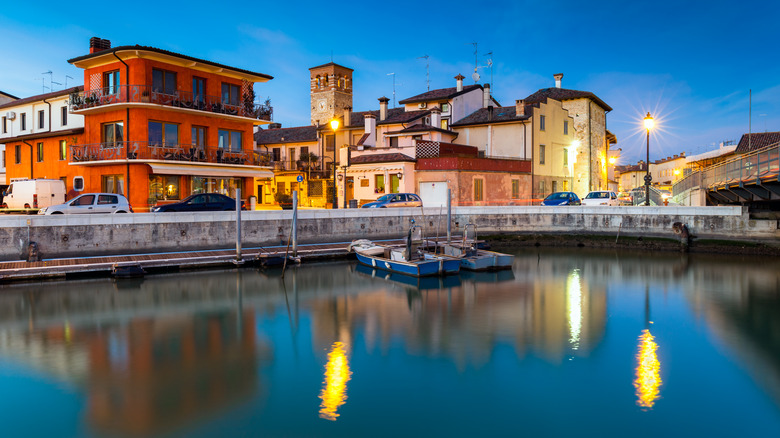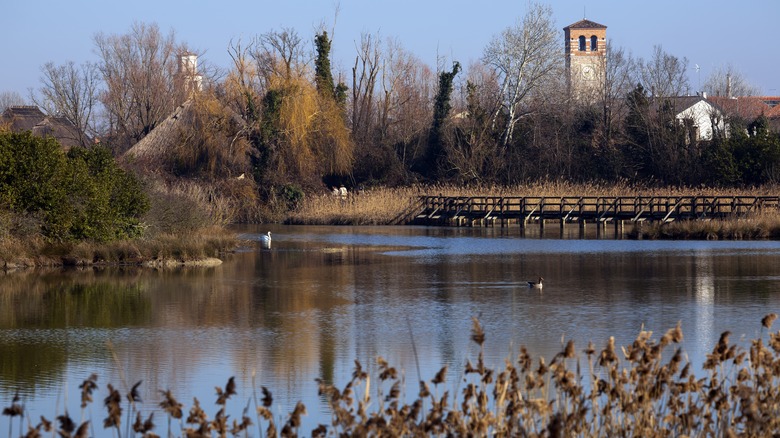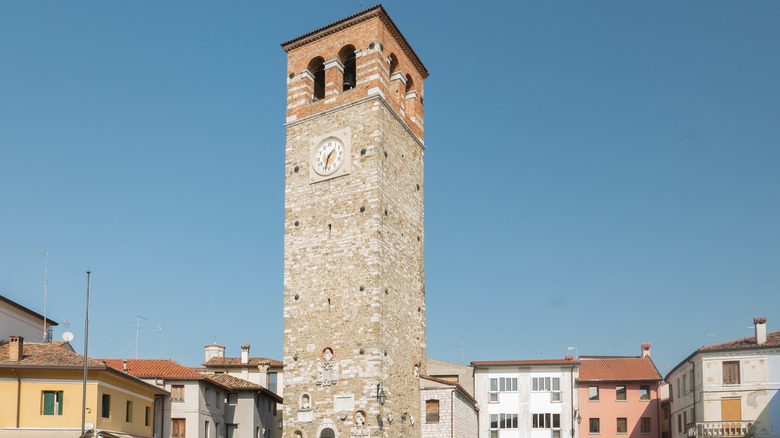Situated Between Venice And Trieste Is Italy's Coastal Commune, Surrounded By Salt Marshes And Stone Churches
Constantly lost in the turmoil of places chock-full of tourists, a seeker of the unknown prefers to engage with out-of-sight destinations that can fulfill their never-ending longing for unsung locations. Marano Lagunare, in Italy's Friuli-Venezia Giulia region, is one of them. Just a short trip from Italy's charming star-shaped town of Palmanova, this small fishing village takes its name from the lagoon that washes its coast and still preserves a veiled memory of a walled city turned into a maritime defense. Seemingly shy, Marano Lagunare is a hidden gem location that gently unfolds to the world, circled by an archipelago of small islands that shield the area — with the most famous being Martignano and Sant' Andrea.
The first settlers were farmers who have been in the area at least since around 5500 B.C. Today, Marano Lagunare is a littoral commune surrounded by salt marshes and stone-built abbeys. It is also the only place in Friuli where locals speak Veneto dialect — the typical language from Veneto region — due to over 300 years of rule by the Serenissima (the Republic of Venice). Since it is so to the coast, Marano made fishing an indispensable source of living which ultimately transformed its cuisine into a sought-after seafood scene, offering travelers a less crowded Italian town that is similar to Venice. The casoni (fishing lodges) are old thatched houses, peacefully situated in the Venetian lagoon, that have become a fascinating trademark of the region's landscape, attracting visitors yearning to deepen their knowledge about the town's culture.
Venice Airport is located around 110 miles from Marano Lagunare, making it a perfect location to reach your destination by bus — a cost-effective alternative to renting a car or taking the train. Another way is to land at Trieste airport and drive for about 40 minutes.
The Nature Reserves of Marano Lagunare and its salt marshes
The lagoon of Marano Lagunare is an unspoiled sanctuary consisting of a partly-navigable waterway system. And the salt marshes of Marano Lagunare represents a totally different reality compared to places like the world's largest salt flats in South America that look like a natural "mirror." But not for that reason are they any less important. This marshland has created an estuary where both flora and fauna thrive. The salt marsh is part of the Canal Novo Valley nature reserve, a conservation area near the town that is made up of a whaling village, grassland, and a small part of the lagoon. A British-inspired visitor center welcomes locals and tourists alike in their casoni-style buildings, where everyone can receive insightful information about the lagoon and the creatures that populate it. More than 300 birds have been spotted in the wetland thus making it a great venue for birdwatching — among which you can see pink flamingos, elegant swans, geese, seagulls, and raptors. An entertaining boat tour allows visitors to discover its beauty, or you can opt for a kayak tour, winding your way along its tidal creeks.
The Foci dello Stella Nature Reserve is another equally important protected ecosystem, enclosing the delta of the Stella River and a part of the lagoon in Marano Lagunare. Many birds find a natural habitat in this vital, soggy environment, such as the purple heron and different species of ducks. You can only access the reserve by water which means you can make the most of this experience by enjoying fishing activities provided by the local guides. You can also make your vacation more active by discovering the lagoon by paddle or through a cycling tour along the mainland.
Visiting the old town and its monuments
The size of a town does not directly reflect the richness of its history — and Marano Lagunare is no exception. The Torre Millenaria (Millennial Tower), standing on the main square called Granda, has been the highlight of the old town since the 11th century. During this time period, the tower was built to defend the city against the attacks, but today is a main historical attraction in the town. Due to its important position along the Adriatic shore, the tower attracted Venetians and the Austrians, who both laid claim to the city. But as soon as Venetian rule ended, the tower fell into ruin. The nearby canals were also soon forgotten, leading to a disease that spread until the end of the 19th century, when the walls were demolished. St. Mark's bastion is also a notable historical fortress of Marano Lagunare, which was also designed to prevent any external attack.
This coastal town boasts a series of stone churches erected during different historical periods, reflecting the traditional building methods. The Pieve di San Martino Vescovo is a renowned 18th-century parish church featuring five retables and pastel-painted religious representations on the side of the walls. Another meaningful sacred monument is the church of Madonna della Salute, dedicated to the Holy Mother — home to a main religious festival that draws believers from all over the region every year.
Once you are in the old town, visit Pescaria Vecia. Once an established fish market until the 20th century, today the place acts as a gathering space and hosts the annual San Vito Festival — when colorful, adorned boats traverse the lagoon — and the food festival called Fasolari in Festa where you can indulge in mouthwatering local dishes.


